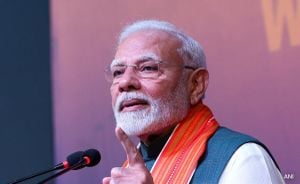The world of entertainment is undergoing seismic shifts. Services like Netflix have opened the floodgates for international content, particularly for Korean dramas (K-dramas) and shows, which are enjoying skyrocketing popularity globally. From gripping narratives to stunning visuals, these offerings are winning over viewers far and wide, changing the dynamics of how stories are told and received. With series like Squid Game and Crash Landing on You dominating streaming charts, it’s clear the Hallyu wave (Korean Wave) is more than just a passing trend.
Take, for example, the eagerly awaited series When The Phone Rings, which debuted recently with its first episode garnering significant anticipation. Released on Netflix on November 22, 2024, the show follows the tumultuous relationship between two compelling characters. Starring Yoo Yeon-seok and Chae Soo-bin, this drama is more than just entertainment; it explores the depths of emotional connection and the aftermath of conflict, all set against the backdrop of societal expectations. With new episodes rolling out every Friday and Saturday, fans are chomping at the bit for more.
The story begins with Baek Sa Eon, the youngest presidential spokesman of South Korea, entwined with Hong Hui Ju, who has triumphed over personal challenges to become a skilled sign language interpreter. Their marriage, initially rooted in convenience, deteriorates to the point where meaningful conversations have become nearly non-existent. The series promises to unravel the layers of their relationship and those of supporting characters, adding complexity and nuance to the narrative.
Interestingly, the recent boom of K-drama viewership coincides with global events, particularly the pandemic, where streaming numbers surged. According to industry insights, the interest among international audiences has sharply climbed, with Netflix reporting Korean shows as the most watched non-English content on their platform. From 2019 to 2022, viewership increased six-fold.
Therapists have begun to recognize the therapeutic potential of K-dramas. For many, these stories are not just about entertainment; they're instrumental for mental health. Korean-American therapist Jeanie Chang highlights how K-dramas help viewers reconnect with their emotions or process trauma. “We all have family pressures and expectations, conflict, and trauma,” Chang explains. Watching characters navigate their challenges on screen can be uplifting, allowing people to feel less alone.
One viewer, American schoolteacher Jeanie Barry, shared her discovery of K-drama during a challenging period after suffering a personal loss. Recommended It's Okay to Not Be Okay, she found herself weeping through the series, which prompted her to process her grief. “There was something about how this culture deals with trauma and mental health,” Barry reflected, noting it was illuminating for her emotional state. This pattern is echoed by others who, grappling with various personal issues, discovered renewed emotional engagement through the raw, poignant storytelling typical of K-dramas.
Even more fascinating is how these shows facilitate cultural connection. For those of Korean descent or those interested in the culture, K-dramas can evoke feelings of belonging. Therapists like Im Su-geun affirm the potential for visual media to nurture psychological insights and healthy coping strategies. K-dramas, with their often relatable plots and characters, provide viewers with avenues to discuss and empower those facing difficulties, including breakups and loss.
This cultural shift signals more than just increased downloads; it's about bridging gaps across continents. The impact of K-drama transcends mere entertainment, acting almost as art therapy for viewers across demographics. The high production values, dynamic storytelling, and the allure of star-studded casts have undeniably contributed to this phenomenon. More than ever, viewers are seeking connections, and K-dramas provide them with both escapism and realism.
Delving back to the global demand for these shows, it’s no surprise how networks like MBC are integrating global audiences by releasing episodes of K-dramas simultaneously worldwide. Last Friday, When The Phone Rings Episode 2 premiered at 21:50 KST, allowing international fans to tune in at the same time. This synchronization signifies how networks are adapting to viewer habits, ensuring they don't get left behind and reinforcing the global community of K-drama fans.
Certainly, the intricacies of these shows are making quite the impact. The fact remains, the current generation of K-dramas not only purposefully tackles layered emotional narratives but also addresses social issues, making them reflective of the challenges many face globally. It goes beyond romance and tragedy; these dramas engage viewers with themes of resilience and empowerment. The popularity of K-dramas and their streaming services have catapulted them to cultural staples, inspiring fan engagement online, diverse interpretations, and even cosplay!
For those who haven’t yet dipped their toes, the world of K-dramas presents diverse offerings, including thrilling crime series, heartwarming romances, and slice-of-life dramas, gently guiding viewers through human connection. The question isn’t whether you should start watching; it's which series to begin with!
To summarize, the extraordinary rise of Korean dramas globally is reshaping not just entertainment but also our approach to mental health, cultural experiences, and social connectivity. With the presence of platforms like Netflix facilitating access, fans worldwide are dipping headfirst and eagerly engaging with every twist and turn K-dramas offer.



